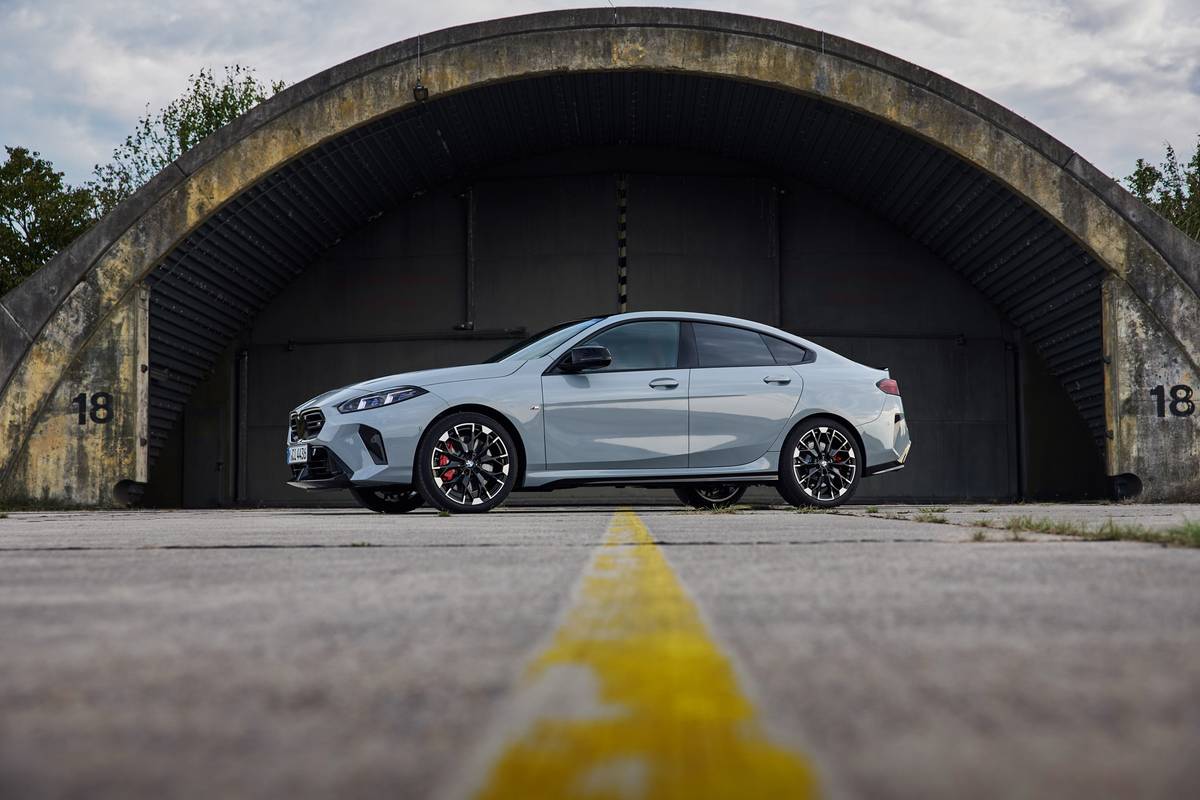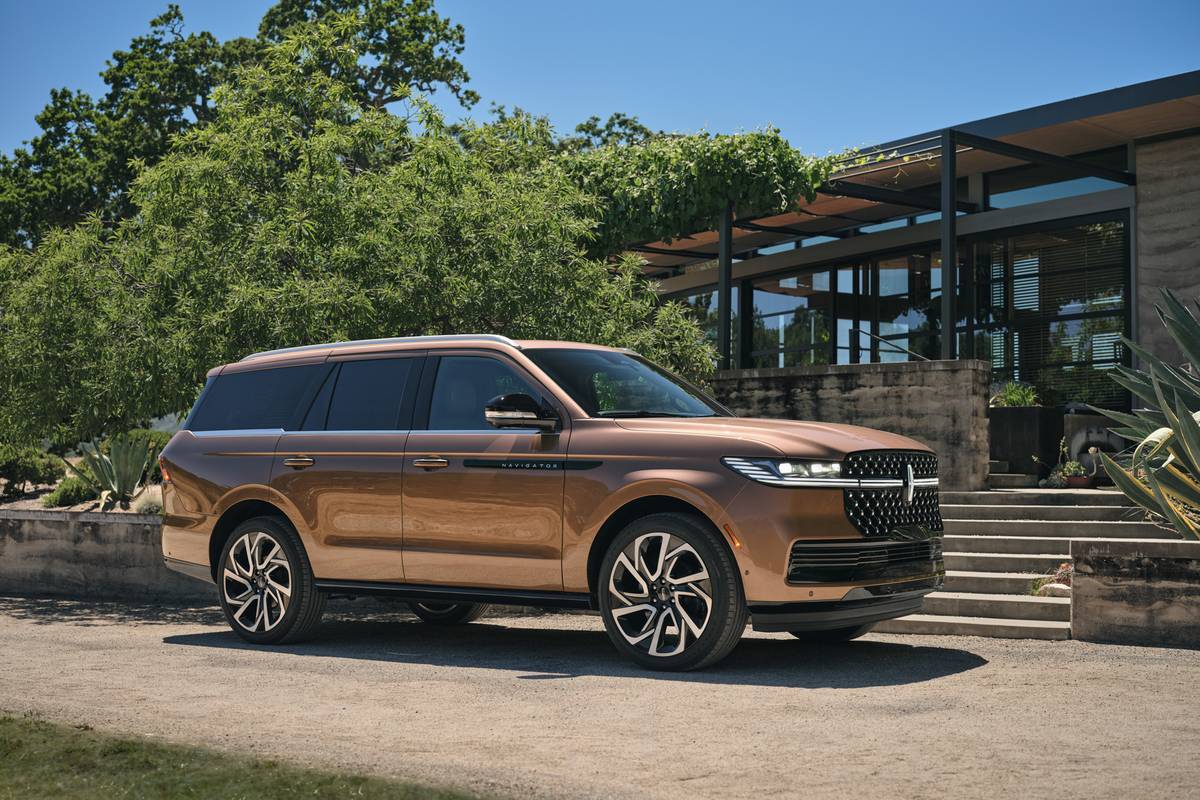The Morning Call and Mcall.com's view
Performance is not a new game at Pontiac. Back in the late 1950s this General Motors division was already making a reputation for rapid transportation. Nothing really very sophisticated; just big V-8s and stiff suspensions. Over the years, Pontiac’s performance cars became more refined and better defined.
This year, apparently Pontiac has decided to produce the ultimate American version of the European touring sedan. It is still too early to determine if Pontiac has actually succeeded, but its Bonneville SSE is certainly going to let the competition know just how serious it is about achieving this goal.
The SSE is perhaps the most European-looking of all American cars. It has a styling that is not only distinct but difficult to confuse with any other car. The basis of the SSE’s styling is, of course, the Bonneville, which was introduced last model year as Pontiac’s version of the Oldsmobile Delta 88 and Buick LeSabre. And although it shared the basic platform with these two other General Motors full-size, front-wheel drive, V-6 powered models, its body design was entirely different. The Bonneville’s aerodynamic styling emphasized subtly rounded curves instead of the traditional GM linear lines. If anything, it proved that while certain GM models may share the basic mechanics and shell, they need not look alike.
The appearance of the SSE even takes this concept a step or two further. A good deal of the SSE’s particular look is achieved by the aero ground effects that extend completely around the lower body, blending with the SSE’s specific front and rear fascias and grille with SSE emblem. Further distinguishing it from other Bonneville models are the 16-inch ”Aero Lite” cast aluminum wheels and a deck lid spoiler with integral center high-mounted stop light. Helping reinforce the European touring sedan look are fog lamps mounted in the lower fascia, specific tail lamps and break-away, blue tinted outside mirrors (power controlled and heated).
All-in-all, a look hard to ignore. Many people commented favorably on the test car (supplied by Knopf Automotive, 3401 Lehigh St., Allentown) but I really don’t feel that everyone will be enamoured by its appearance. But, then, that is probably why there are so many different looking cars.
The sportiness of the SSE is more than skin deep. The basic four-wheel independent suspension – MacPherson struts all-around – has been tightened-up, beefed-up and sported-up for a specific ”Road Car” suspension. This entire handling system includes variable ratio power steering, ABS (anti-lock brake system), tuned MacPherson front and rear struts and stabilizer bars, electronic ride control, and P215/60R16 Eagle GT+4 all-season tires.
The ABS, I feel, is one of the most important safety devices brought out in recent years. As the name implies, the brakes will not lock, even in panic stop situations on all types of road su rfaces and conditions. ABS does not mean a driver can just ignore surfaces and conditions and go full speed ahead, but it does mean safer stops and steering control under most circumstances. Like most other ABSs, the SSE’s uses sensors to measure wheel rotation and feeds the information into a central computer that determines and compensates for unequal rotation. The best part about these systems is that a driver really need not know how or why it works. Just lay on the brakes (if circumstances dictate) and the system does all the thinking.
The electronic ride control, although not really new, is another system that has been seeing more use over the past couple of years. Still mostly in use on European-type touring sedans and luxury cars, the ride control, basically, keeps a vehicle on an even keel. The Bonneville system (also available on other models than the SSE) has a built-in sensor measuring the height at the rear of the vehicle. To maintain a level ri e, the sensor sends a signal to start an air pump, increasing the air pressure in the rear air- adjustable strut to raise the rear or signals a valve to allow air to escape. This lowers the air pressure and the rear of the vehicle.
A new item this year is the Goodyear Eagle GT+4 tire. In essence, this new tread configuration combines a performance tire with an all-season tire. The tires seemed to work well on the test car but they are so new only time will tell just how good they are.
When the whole ”Road Car” suspension is put together, the results are impressive. The test car’s handling no doubt would even please an avid driving enthusiast. Handling is tight, cornering is crisp and the ride isn’t all that bad. The ride is somewhat stiffer than most other full-sized four-door cars, but this is the type of car that will be bought by people who are not bothered by a firmer ride; or they better not be.
Powering the SSE is the familiar but updated for this year 3.8-liter/231- cubic-inch V-6. This engine, in versions from mild to wild, has been powering General Motors cars for a number of years now and is a proven factor. The version in the SSE (and several other GM models for that matter) is known as the ”3800” and key technology features include ”on-center” cylinder bores, balance shaft, new pistons and fuel injectors and increased performance. Don’t get too excited about all this technical stuff; what it all comes down to is a more powerful and, what is somewhat of a surprise, cleaner running engine.
The 3800 is rated at 165 horsepower at 5,200 rpm and 210 foot pounds torque at 2,000 rpm. This is 15 horsepower and 10 foot pounds torque more than the standard version of this engine. It also makes it the most powerful non- turbocharged version of the 3.8 V-8 ever offered. The technological improvements have also reduced hydrocarbon (HC) emission by 33 percent and carbon monoxide (CO) emission by 20 percent.
The SSE’s performance, not surprisingly, is good. Just lay on the accelerator and let the four-speed automatic transmission do the shifting. Quick acceleration, rapid passing and effortless highway cruising are all offered. And since the fourth gear is an overdrive gear, highway fuel mileage is somewhat impressive. The test car average 28 miles per gallon for limited access highway driving and 24 mpg over local highways. City driving averaged 17 miles per gallon. Unleaded premium is required.
To go along with all of this aerodynamic styling and sophisticated engineering, is an interior guaranteed to dazzle those entering it for the first time. From its 10-way power adjustable articulating front seats (maybe just an adjustment too far) to its electronic compass (perhaps not necessary but a great toy) and all the many features in between, the SSE combines luxury and sportiness. Particularly impressive is the red back-lit instrument panel. Instruments, as well as controls (including a duplicate set of radio/cassette controls in the middle of the steering wheel), are within easy sight and reach.
The price of the Pontiac SSE can either be expensive or reasonable, depending on one’s outlook and pocketbook. The model comes only one way – whole hog – and has a base price of $21,879. The base includes all of the equipment mentioned plus all the power/convenience/trim items usually associated with a touring/luxury car. The test car had only one option, a power glass sunroof with a price of $1,230. So, the bottom line, with a destination charge of $480, came to $23,589.
The SSE, as well as other Pontiacs, is protected by a 12-month/12,000-mile warranty on the entire car, a 6-year/60,000-mile powertrain warranty, and a 5- year/100,000-mile rust perforation warranty.
Latest news



